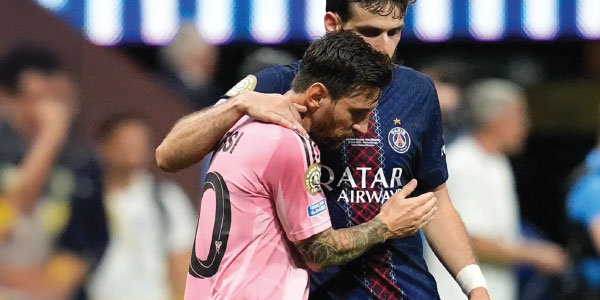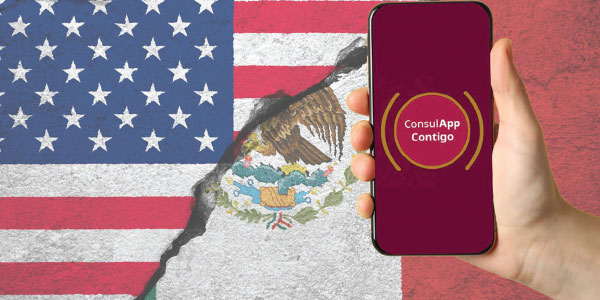
By Jorge Ramos
I saw them die right before my eyes: four prawns, twisting over a hot iron griddle. One was jumping, trying to escape its imminent death. The noise these creatures made as they were being charred sounded like an almost indiscernible little cry of anguish. They were suffering. I could feel their deep black eyes looking at me, as though they were begging for help. A coward, I did nothing.
During a recent trip to Japan, a teppanyaki chef in the entertaining Roppongi area of Tokyo had asked us if we wanted to see how he cooked live prawns, and we naively agreed. We watched and became accomplices to something that felt like torture and murder. Then, worst of all, we ate the prawns, feeling disgust and guilt.
This unpleasant experience brought to mind Franz-Olivier Giesbert’s book, “L’animal Est Une Personne” — or “The Animal Is a Person.” Giesbert’s claim in the book is simple and provocative: There is no great difference between animals and humans. We all feel, think, communicate and breed. Furthermore, animals’ senses” sight, smell, hearing, touch, taste” tend to be far more acute than our own. “Our common ancestor was a digestive tract creeping in the ocean,” Giesbert writes in his book, “with a mouth to feed itself and an anus to defecate. That was it. This is how we managed to become what we are: human beings, birds, reptiles and insects. We are all the same, even if we don’t look alike.”
People who grew up with pets know how intelligent they are, and how they’re considered part of the family. My cat Lola lived with me for almost 20 years. Together we changed addresses endless times, and she was by my side as I wrote 12 books. She died recently, and I’m not overstating things when I say that her loss was as painful as losing an endearing human friend.
Similarly, my dog Sunset was a great friend. Growing up in Mexico, my father never let us have a dog; four boys and one girl were enough. But once I got established in the United States and started a family, we adopted Sunset, a wonderful beagle mix. I fondly remember taking Sunset running or bike riding with me, and I don’t think anyone ever greeted me more warmly. She died years ago, but my kids miss her as much as I do.
Sunset and Lola communicated marvelously well. Their intellectual and expressive abilities were sharper and more developed than those of many people. They weren’t inferior beings at all.
Giesbert’s book is full of anecdotes illustrating the notion that animals are more egalitarian and more caring than many humans, even superior to some. He recalls, for instance, a story about how a group of elephants in South Africa “decided to free [an accurate word to describe it] a herd of antelopes trapped inside a fence, and led them somewhere else.”
He also describes the horrors of industrial pig and cow slaughterhouses in Europe, and denounces the hypocrisy of those who might say they are against bullfighting yet accept the sacrifice that goes into a serving of tuna or chicken breast.
If we accept that animals are, indeed, people like us, how can we justify their death to feed ourselves?
There is no easy answer. Giesbert asserts that we are accustomed to killing in order to survive, and that becoming a vegetarian is half of a solution. “Living is killing,” he writes. “Vegetarianism is an impossible fight. Against yourself, against your family, against society. You have to struggle day after day, and most times you end up losing.” The writer himself acknowledges a weakness for grilled fish.
Like many humans, I make an arbitrary distinction between dogs, cats, elephants and dolphins, just to mention a few, and all the other animals. Just as I would never have considered Lola or Sunset to be food, I would never eat whale or orangutan meat. But the more I think about the prawns I saw dying in Japan, the harder it is for me to separate those animals that are for eating from those that are not.
Meanwhile, I’m getting more accustomed to the idea of questioning why animals and humans are considered so different. Animals are people.
I wonder what they think of us.
Los vi morir, ahí, frente a mis ojos. Los cuatro langostinos se retorcían sobre la plancha hirviente. Uno también brincaba, tratando de escapar de su inminente muerte. El ruido de su piel achicharrada sobre el metal se confundía con lo que parecían indescifrables grititos de angustia. No cabía la menor duda que estaban sufriendo. Los ojos profundamente negros de los langostinos me veían, como pidiendo ayuda. Y yo, cobarde, no hice nada.
El chef del teppanyaki en la divertida zona de Roppongi, en Tokio, nos preguntó en un viaje reciente si queríamos ver cómo cocinaba los langostinos vivos e, ingenuamente, le dijimos que sí. Fuimos testigos y cómplices de su tortura y asesinato. Y luego — ¡peor! — nos los comimos con una sensación de asco y culpa.
La desagradable experiencia me recordó el magistral libro del escrito Franz-Olivier Giesbert, “Un Animal Es Una Persona”. Su argumento es sencillo y provocador: No hay grandes diferencias entre los animales y los seres humanos. Todos sentimos, pensamos, nos comunicamos y nos reproducimos. Además, sus sentidos — vista, olfato, oído, tacto y gusto — son muy superiores a los de nuestros. “Nuestro antepasado común era un tubo digestivo que reptaba por los océanos, con una boca para alimentarse y un ano para defecar”, escribe Giesbert en su libro. “Nada más. Y de esa forma llegamos a ser lo que somos: humanos, aves, reptiles e insectos. Todos semejantes, aunque no nos parezcamos”.
Quienes hemos crecido con mascotas sabemos lo inteligente que son y cómo se convierten en parte de la familia. Mi gata Lola vivió conmigo casi 20 años. Me acompañó en innumerables mudanzas y estuvo a mis pies durante 12 libros que he escrito. Murió hace poco y no exagero al decir que su ausencia es tan dolorosa como si hubiera perdido a un gran amigo.
Sunset fue una perra estupenda. Mi padre nunca nos dejó tener un perro en la casa en México — bastaban cuatro hijos y una hija — pero ya en Estados Unidos adoptamos a una sensacional mezcla de labrador y beagle . Salía a correr y a andar en bicicleta con Sunset, y nunca en mi vida he recibido bienvenidas más calurosas y ensalivadas que las que ella me daba. Murió hace años pero mis hijos la extrañan tanto como yo.
Con Sunset y Lola nos comunicábamos maravillosamente bien. Su intelecto y emotividad eran mucho más agudos y sofisticados que el de algunas personas que conozco. Para mí no eran, de ninguna manera, seres inferiores.
El libro de Giesbert está cargado de anécdotas que demuestran la paridad, solidaridad y hasta superioridad de los animales respecto a los humanos. Cuenta, por ejemplo, como en Sudáfrica “un grupo de elefantes decidió una noche liberar [es la palabra exacta] a un rebaño de antílopes en un vallado para trasladarlo a otro lugar”.
Describe con horror los mataderos de cerdos y vacas en Europa. También denuncia la hipocresía de quienes se oponen a las corridas de toros, pero aceptan el “sacrificio ritual” de una buena cena de atún o pechuga de pollo.
Si aceptamos que los animales son personas como nosotros, entonces ¿cómo podemos justificar su muerte para nuestra alimentación?
Giesbert asegura que estamos acostumbrados a matar para vivir, y que convertirse en vegetariano es una solución a medias. “Vivir ya es matar”, dice. “El vegetarianismo absoluto es una lucha imposible. Contra uno mismo, contra la familia, contra la sociedad. Hay que reñirla a diario y con mucha frecuencia se pierde”. El escritor mismo reconoce su debilidad ante “un pescadito a la plancha”.
Como muchos humanos, yo había hecho una arbitraria división entre perros, gatos, elefantes y delfines — por mencionar sólo algunos — con el resto de los animales. Nunca se me hubiera ocurrido, por ejemplo, comerme a mi gata Lola o a mi perra Sunset, ni tampoco meterle una mordida a un pedazo de ballena u orangután. Pero mientras más pienso en los langostinos que vi morir en Japón, más difícil es decidir qué animales puedo comer y con cuales puedo entablar amistad.
Por ahora, me empiezo a acostumbrar a la idea de que esas absurdas diferencias que hemos puesto entre los animales y los humanos no tienen ninguna base científica. Los animales son personas.
¿Qué pensarán ellos de nosotros?










